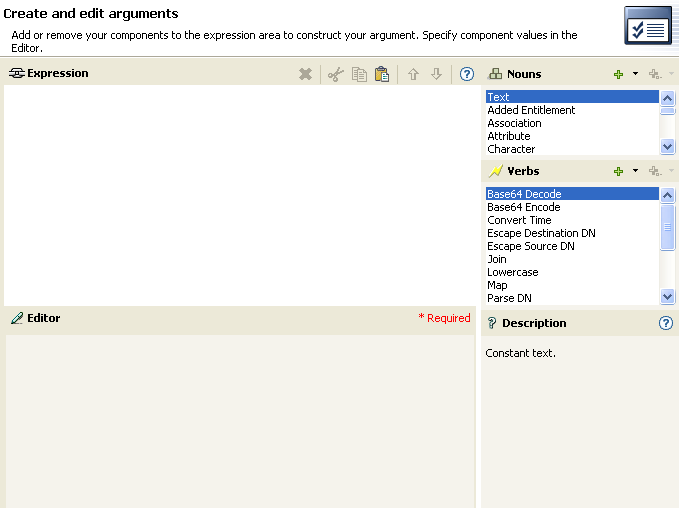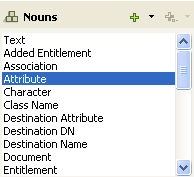3.5 Creating an Argument
The Argument Builder provides a dynamic graphical interface that enables you to construct complex argument expressions for use within the Policy Builder. To access the Argument Builder, see Argument Builder.
Arguments are dynamically used by actions and are derived from tokens that are expanded at run time.
Tokens are broken up into two classifications: nouns and verbs. Noun tokens expand to values that are derived from the current operation, the source or destination data stores, or some external source. Verb tokens modify the results of other tokens that are subordinate to them.
To define an expression, select one or more noun tokens (values, objects, variables, etc.), and combine them with verb tokens (substring, escape, uppercase, and lowercase) to construct arguments. Multiple tokens are combined to construct complex arguments.
Figure 3-2 Argument Builder

For example, if you want the argument set to an attribute value, you select the attribute noun, then select the attribute name:
-
Double-click in the list of noun tokens to add it to the pane.

-
Browse to and select the attribute name in the field.

You can browse the Identity Vault schema or the connected application schema.
If you only want a portion of this attribute, you can combine the attribute token with the substring token. The expression displays a substring length of 1 for the Given Name attribute combined with the entire Surname attribute.

After you add a noun or verb, you can provide values in the editor, then immediately add another noun or verb. You do not need to refresh the Expression pane to apply your changes; they appear when the next operation is performed.
See Noun Tokens and Verb Tokens for a detailed reference on the noun and verb tokens. See Argument Builder for more information on the Argument Builder.